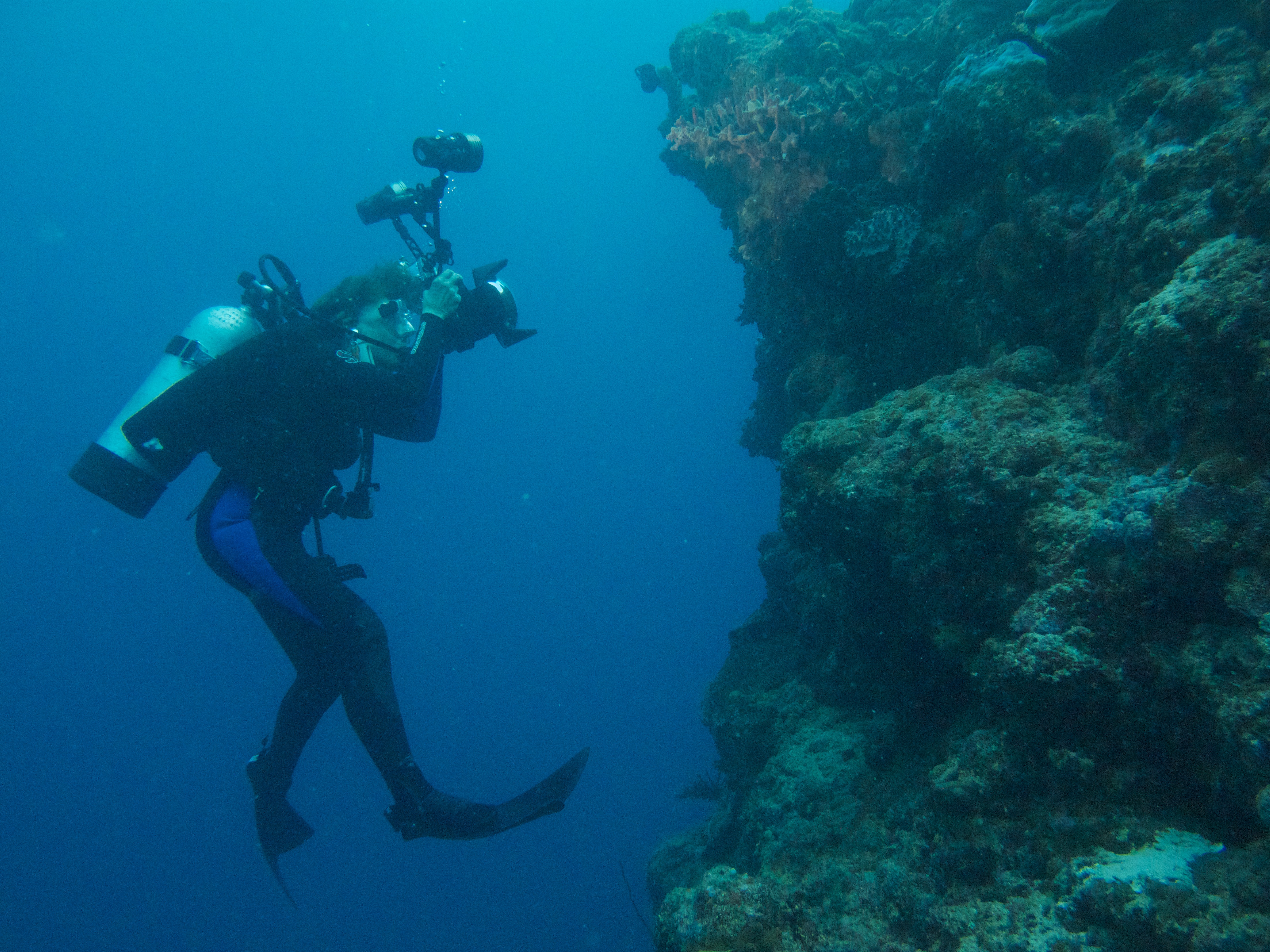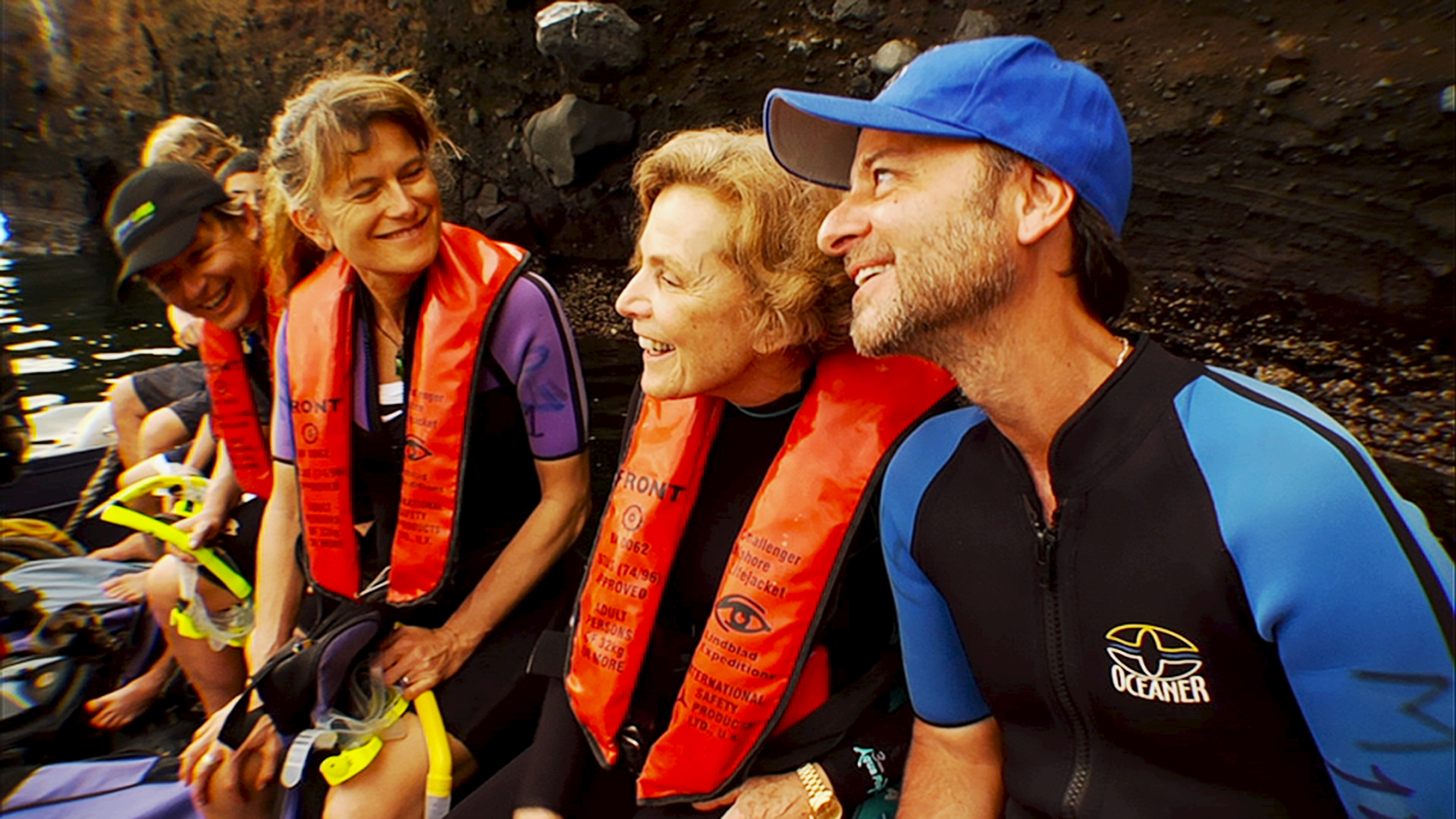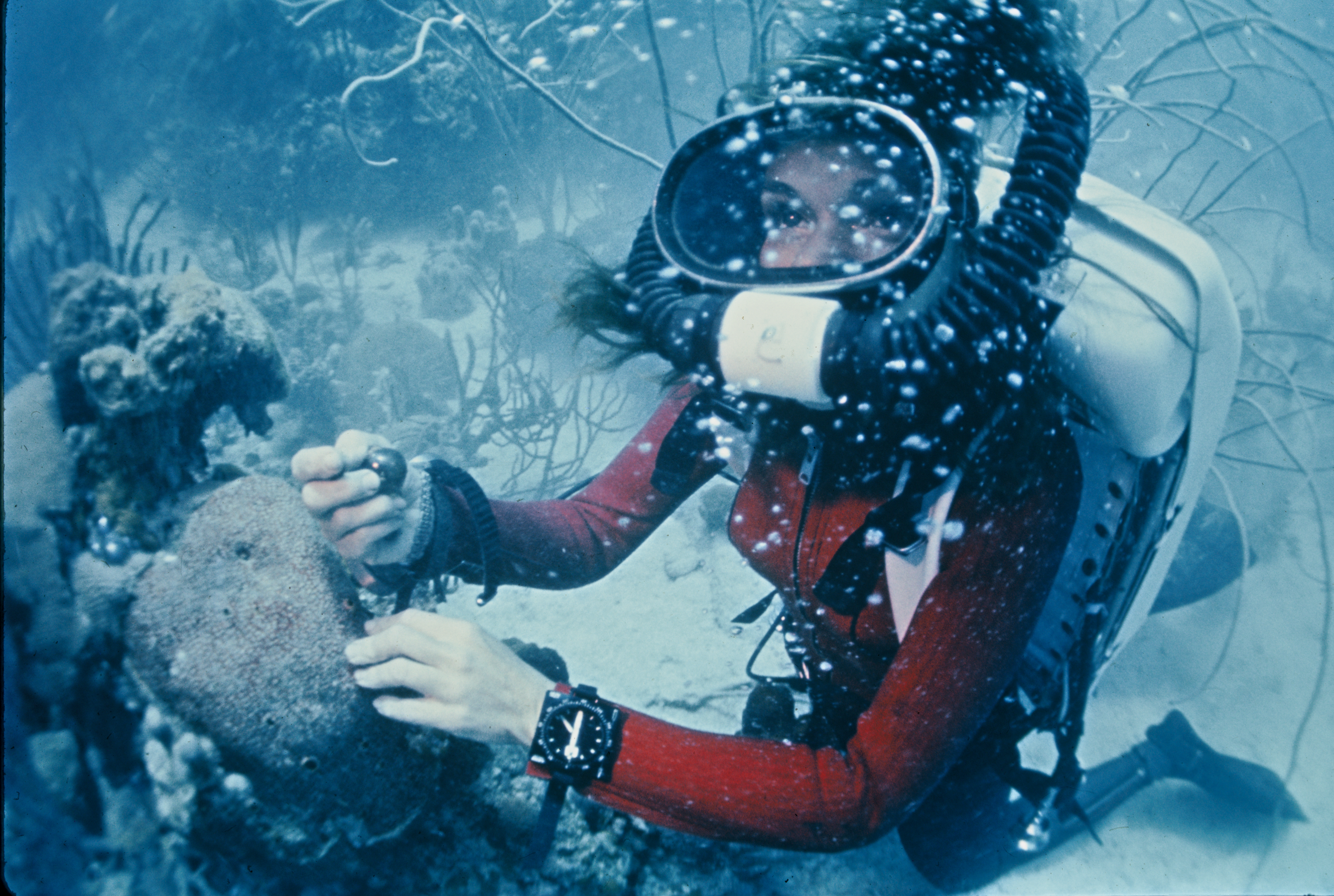
The new documentary Mission Blue charts the life of oceanographer Sylvia Earle. Director Fisher Stevens set out to make a film about her work, and ended up being fascinated by the person. Photo: Mission Blue
Fisher Stevens produced The Cove, the 2009 Oscar-winning documentary about dubious Japanese dolphin-hunting practices, and his latest film takes him back into familiar waters. Stevens co-directed the newly-released doc Mission Blue, spending the last four years trekking around the world—from the Galapagos Islands to the Chesapeake Bay to the Great Barrier Reef—with unstoppable oceanographer Sylvia Earle.
Mission Blue is now on Netflix. Watch it here »
This film, which Stevens co-directed with Robert Nixon (Gorillas in the Mist), follows the venerable marine biologist, eco-activist and 2009 TED Prize winner as she campaigns to create “hope spots,” underwater areas protected by law because of how critical they are to the health of the ocean. The film sheds light on the dire environmental impact of the commercial fishing industry and reflects on the state of the world’s oceans. But while the film began with his deep respect for the ocean, Stevens says that as he and Nixon dug deeper, it evolved into something of a feminist tale. Mission Blue portrays Earle as a female pioneer in the stodgy male-dominated world of science, showing how time and time again she charges through glass ceilings—and submarines—with fierceness and determination. “She did all of this in a man’s world,” says Stevens.
We sat down with Stevens to talk to him about capturing Earle’s relentless efforts to save the oceans on film. Below, an edited transcript of our conversation.
Making a film about ocean conservation seems like a huge endeavor. Did you stick with your original script or did you change things up once you started filming?
We totally changed directions. We basically threw the original movie away and started from scratch. At first, Bob and I were making a film about “hope spots” and to be honest, the film felt a bit boring. Then Sylvia’s daughter sent us a box of archives—old movies of Sylvia swimming when she was a teenager in the Gulf of Mexico. All of them were 16mm and we had to process it all. But the footage was amazing. Since Sylvia is such an inspiration, we decided we had to make the movie about her. And oddly: she was not into it. She did not want to go into her personal life. But that’s what makes the movie work, at least for me; you get emotionally attached to Sylvia and you see the ocean through her eyes.
What were some of the challenges you faced during filming?
Trying to weave together all the different storylines. It was tricky to intermix the problems of the ocean —like overfishing, coral depletion, carbon acidification—into this one movie about this one woman. That’s why it took us more than four years to finish. There were lots of old tapes that needed to be processed and cleaned up, so there were some technical hurdles. The other challenge was making sure the film was entertaining. We had to work hard on keeping the science entertaining. We didn’t want too many talking heads.
Mission Blue is a global campaign. How did you decide what and where to film?
That was another challenge: where to go? We wanted to go everywhere. We wanted to go to China. We wanted to go to India. There’s this great reef in Cuba that’s completely protected, and I really regret not going there. Cuba is a place where, because they’re communists, they don’t allow commercial fishing and as a result it’s the last real reef in the Caribbean that’s perfect. Between Sylvia’s schedule and my various projects, we were all traveling all the time, so sometimes it was hard to sync up. There were other places we could’ve gone. We could have kept shooting this movie forever.
Some of the footage is so gorgeous. Was it all real? For example, the sparkling fish underwater?
That’s all real. That wasn’t taken in the ‘70s. That’s new technology. We bought that from Edith Widder, who was on our Galapagos trip. She has cameras that go down 2,000 feet and she is able to capture those images. They’re mind-blowingly beautiful. They are like little planets, each one of them. It’s really moving.
Did you come away from this learning anything new or shocking about the ocean?
I had a lot of stark realizations while filming. In the last scene in the film, when we went to Australia, we really went to find a beautiful place to show in the movie. We went 100 miles out into the Coral Sea, off the northeast coast of Australia, basically in the middle of nowhere, and there was nothing to see. The coral had been depleted and there were no fish!
Another thing I realized was that even though I knew about industrial fishing, I was shocked by the scale of it. The amount of oil wells also blew me away. And I was also shocked that Tony Abbot, the Prime Minister of Australia who got into office while we were filming, reversed a decision that was taken to have marine protected areas in the country. People like him are the ones who need to see this film.

Sylvia Earle, on the set of Mission Blue. That’s Fisher Stevens on the right. Photo: Mission Blue
Did you know a great deal about the fishing industry and the state of the ocean before you started filming?
I’m a scuba diver and, through diving, I learned a lot about how bad the state of the ocean can be. I’ve dived in gorgeous places and seen amazing stuff, but I’ve also been in places where there’s nothing but bleached coral. That was basic education for me. I was also a pescatarian for a while—until I got mercury poisoning. Ten years ago, there was a mercury epidemic because we were eating so much sushi. Then I met Louie Psihoyos who was directing the film The Cove and mercury was a big part of the film. So yeah, you could say I knew a fair bit before working on Mission Blue.
Were there any hairy moments while filming? For example, you swim with a lot of sharks in the film. Was that nerve-wracking?
Sharks never scare me. The hairy thing was watching Sylvia swimming in the Chesapeake Bay in Virginia with the Atlantic menhaden and a bunch of fishing boats. I mean she could have gotten squished—she was pretty close in there. The fisherman had no idea what we were up to. They saw the cameras and were a bit perturbed. They kept telling us to get away from them. They were right in that it was dangerous and that Sylvia and Bryce Groark, our cameraman, could have easily been crushed by the two boats or gotten sucked up by the vacuum as they actually almost did. Shows you how brave Sylvia is—that at 78 years old, or at any age, she would be willing to go in there and get those shots and have that experience. She was amazing—she just went in. The police were waiting for us when we got back to the dock, questioning our motives and wanting to look at our footage, but we did nothing wrong. It was tense.
Australia was also pretty hairy. I got so seasick, and then sad seeing the reefs looking the way they did. The Great Barrier Reef was shocking to me—how much it’s been depleted, and that’s a protected zone. Part of it was like a graveyard. How do you go out to Holmes Reef, a reef a 100+ miles outside of any populated place and not see any fish? That means two things: the coral is dead so the fish don’t go to that coral, and giant fishing boats have trawled the ocean and taken everything.
What do you think it will take to get people to see ocean conservation as a huge issue and to act on it?
There needs to be a really big shift. And that shift means that the environment has to become the biggest political issue in the world. The UN is trying to make it a priority, but does the UN have teeth? Do we need to create a whole new environmental body? We know the facts. There’s going to be 10 billion people in 2050. How are we going to sustain 10 billion people at this rate? We can’t. There are people, such as the US Ambassador to Palau and the president of Palau, who are trying to show that you can end industrial fishing and still have tourism. If we can use Palau as an example of how to make it work, then we’re making good progress. It takes people with power. Think of how the French protect Tahiti. When you go diving in Rangiroa, why are there so many sharks? Why are there so many stingrays? It’s because the French protect it. The tourists flock there to see these fish. It makes financial sense. The locals fish for their dinner, but there’s no large-scale fishing. It all boils down to economics in the end. They’re finally saying that the climate is changing so much that it’s affecting weather patterns, and that all these tornadoes, hurricanes and typhoons are affecting the economy. That’s what its going to take, sadly.
In your opinion, what’s the worst-case scenario?
I don’t even want to think about it. Water’s going to be an issue. Drought is an issue and then if we pollute too much of the ocean, we’re not going to be able to breathe. People are going to get respiratory problems, or get sick from eating fish that’s toxic.
What about those of us who like eating fish?
It should be treated as a special occasion. There are certain species of fish that they should stay away from, such as bluefin tuna, Chilean sea bass, and red snapper. There are two issues to think about: toxicity and sustainability. I’ll eat certain sushi, like wild salmon, if I’m in a local place and I’ll do it maybe four times a year. I make it a real treat. This year, I’ve had sushi zero times.
So the environment an issue that’s really close to your heart?
All conservation is close to my heart. I’m working with Louie Psihoyos who did The Cove on a film about extinction. Talk about depressing. It covers all species, including us. What are we doing? Why are we wiping everything out? And are we next? That kind of thing.
What is the most beautiful moment you’ve ever had in the water?
Without a doubt, it was in Hawaii. I had a couple of days off and a friend of mine invited me to swim with dolphins in Maui. Instead we end up seeing humpback whales—and I swam with them. To me, that was the most spiritual, most beautiful moment I’ve ever had in the water because they are just so content and gentle and you just feel their beauty. I’ve also swam with dolphins in Tahiti and seen huge Hammerhead sharks. I’ve been in a kayak surrounded by like 30 pilot whales in Papua New Guinea. I’ve been lucky.

Sylvia Earle where she’s most at home, underwater. Photo: Mission Blue
Comments (6)